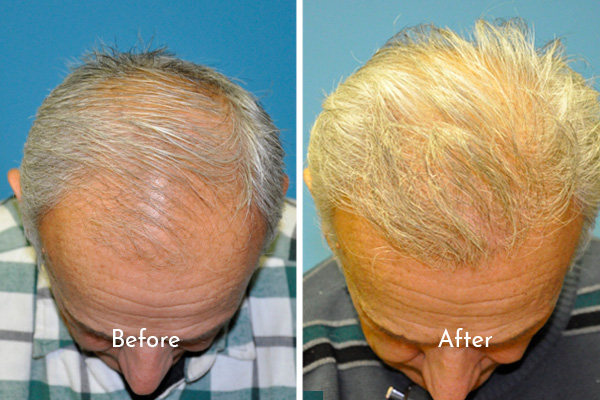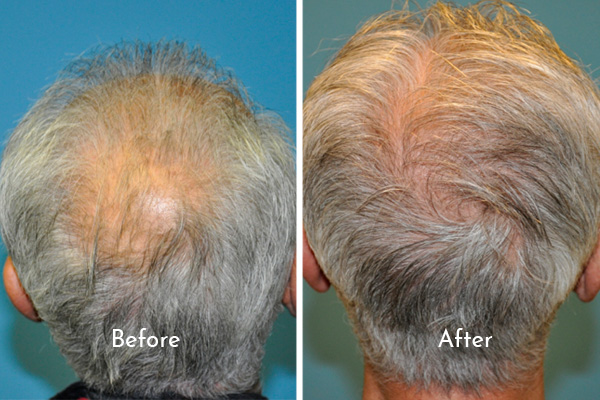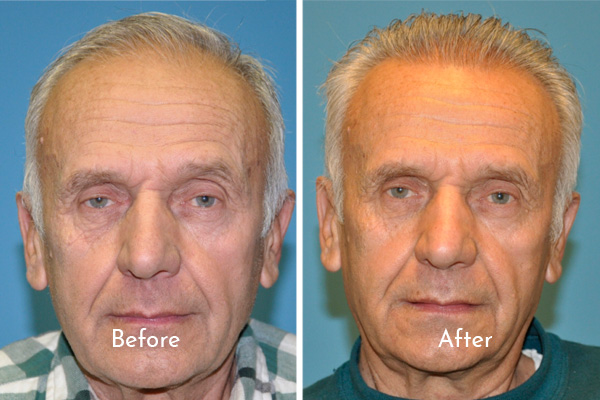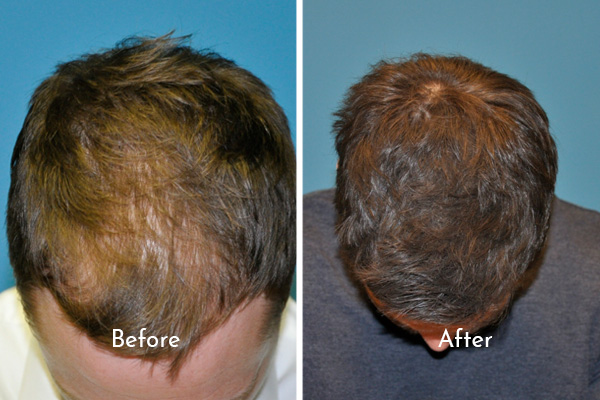Your Natural Hair Restoration Solution
Our hair is often one of our most distinguishing features. A full head of well-groomed hair is not only a sign of attractiveness but also a sign of youth and vigor. However, it’s common for hairlines to retreat and foreheads to expand with age. Other forms of baldness may begin to appear in people as young as 20, especially on the crown, or top, of the head.
At Barr Aesthetics, we understand the impact that hair loss can have on your self-image. That’s why we’re proud to offer one of the most successful and natural-looking hair restoration therapies available: Follicular Unit Extraction (FUE). This advanced procedure helps men and women achieve a fuller, more youthful head of hair.
Schedule a Consultation
For a consultation or to schedule an appointment, call or fill out the form. During your consultation, we will listen to your goals and spend time educating you about your treatment options and develop a customized hair transplant treatment plan.

Understanding Hair Loss
Hair loss is a common concern that can affect anyone, regardless of age or gender. While some people may retain their hair well into middle age, others may start noticing early signs much sooner, including:
- Thinning around the temples
- A widening part
- Hair loss in clumps
- Loss of hair all over the body
Hair loss can be caused by various factors, including genetics, hormonal changes, nutritional deficiencies, and medical conditions. The most common type of hair loss we treat with FUE is androgenic alopecia, often known as male-pattern or female-pattern baldness.
Other Natural Signs of Aging Hair
Hair loss isn’t exclusive to men, and it isn’t the only sign of aging in relation to our scalp and what grows, or doesn’t, out of it. Other signs include:
- Loss of pigment (hair goes grey or white)
- Changes to texture
- Loss of volume
- Hair dries out or becomes more brittle
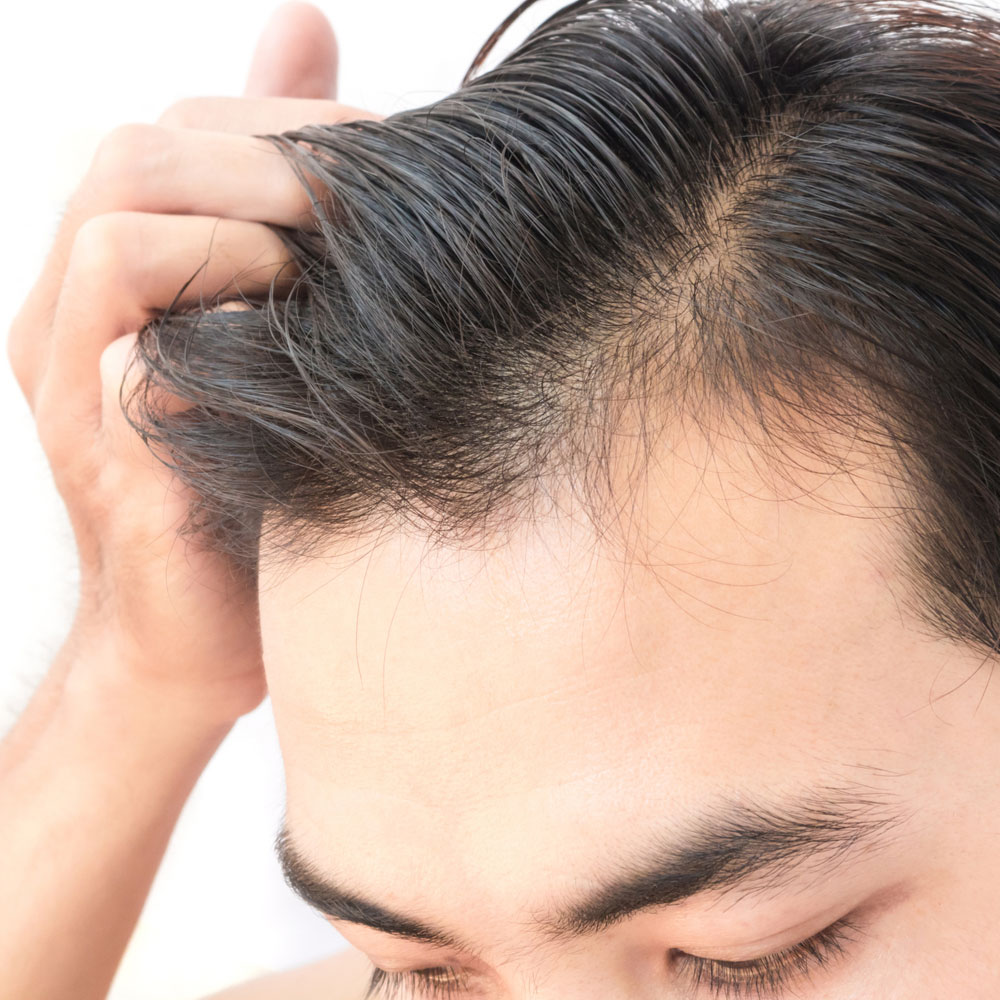
What Causes Hair Loss
Besides aging, hair loss can be caused by different factors.
- Alopecia – various forms
- Genetics
- Hormonal Changes
- Injury to Follicles
- Nutritional Deficiency
- Thyroid Imbalance
- Tinea Capitis – Fungal infection
- Telogen Effluvium – Emotional stress or stress on the body due to medication
What Makes a Good Candidate for FUE?
FUE hair transplants are an excellent solution for both men and women experiencing hair loss. We typically recommend this treatment for individuals over the age of 25. Waiting until this age allows us to better determine your natural hairline and plan for optimal transplant placement.
At Barr Aesthetics, we also consider the following to determine if FUE is the right procedure for you:
- You have early to middle-stage hair loss. FUE is best for these stages, as it can be more challenging to get coverage over a wider area in advanced hair loss.
- You prefer to wear your hair short. The FUE procedure leaves minimal scarring, which is a major advantage for those who like a shorter hairstyle.
If you’re unsure whether FUE is the right fit, we encourage you to schedule a consultation with our board-certified cosmetic surgeon, Dr. Barr. We’ll discuss your goals and create a personalized treatment plan for you.
The FUE Transplant Procedure & Results
Because FUE depends on the individual placement of each follicle, it’s a very time-intensive procedure. The total time will depend on the area to be covered and the number of follicles being transplanted. Most patients can expect their procedure to take around three hours.
During the treatment, you can relax by listening to music or watching a movie. A local anesthetic will be used to ensure you feel no pain, and a mild sedative can be provided to alleviate any anxiety.
Although newly placed follicles may shed their hair shafts at first, the follicles remain stable. You can expect new, permanent hair to grow back in soon and continue to follow a normal growth cycle.
The natural appearance of your FUE transplant depends on the expertise of the person who performs the procedure. The strategic placement, angle, and density of the transplanted hair are as much an art as they are a science. Dr. Barr has been performing FUE transplants for patients in the Salt Lake area for years, and many have achieved remarkable results through her personalized care.
FUE vs. FUT: What’s the Difference?
Two main types of hair transplant methods exist: Follicular Unit Transplant (FUT) and FUE.
The primary difference lies in how the donor hair is harvested.
- FUT: In an older, more traditional procedure, linear strips of tissue are taken from a donor area on the scalp. Individual follicles are then harvested from this tissue.
- FUE: This revolutionary method harvests individual follicles directly from the scalp. This minimizes scarring and reduces healing time at the donor site.
At Barr Aesthetics, we offer both FUE and FUT hair restoration therapies. During your consultation, we’ll help you determine which procedure is best suited for your unique situation.

FUE Hair Transplant FAQs
Will I have scarring?
FUE is minimally invasive, resulting in little to no visible scarring. The tiny, round punch sites contract as they heal, and any marks are concealed by the surrounding hair.
How natural will my hair look?
Unlike the “hair plugs” of the past, FUE patients achieve very natural-looking results. The donor follicles are placed in natural clusters and patterns. Many of our patients report that even their hairstylists don’t know they’ve had a hair transplant.
How long is the recovery time
Most people can return to work and other regular activities the day after their procedure. The donor sites will heal almost completely in just a few days.
Gallery
